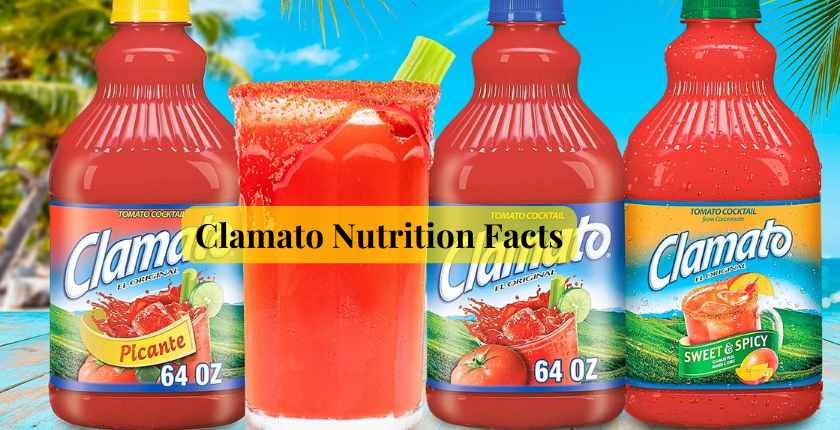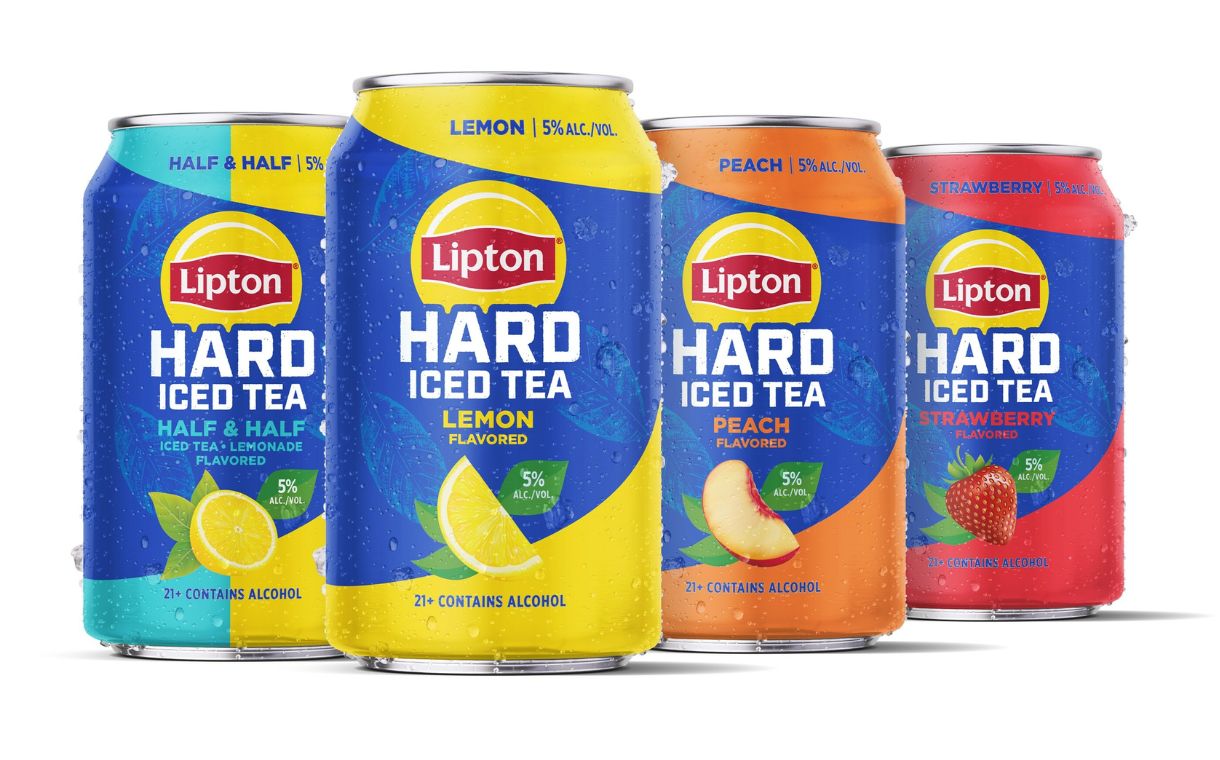Table of Contents
Craving a refreshing Clamato juice but curious about its nutritional content? You’re not alone! Clamato, the unique blend of tomato juice and clam broth, has gained a loyal following for its bold flavor and versatility in cocktails and dishes. However, understanding its nutrition facts is crucial for making informed choices.
In this guide, we’ll explore the good, the not-so-good, and the delicious aspects of Clamato’s nutritional profile.
Clamato Ingredients
Before diving into the nutrition facts, let’s first understand what goes into a bottle of Clamato. The key ingredients in this iconic beverage include:
| Ingredient | Purpose |
|---|---|
| Tomato Juice | Base flavor and nutrients (vitamins, lycopene) |
| Clam Broth | Distinctive savory and umami taste |
| Concentrated Lime Juice | Adds acidity and tanginess |
| High Fructose Corn Syrup | Sweetener |
| Salt | Enhances flavor and acts as a preservative |
| Spices (including Celery Seed, Chili Pepper, Garlic Powder) | Provide depth of flavor and complexity |
| Disodium Inosinate & Disodium Guanylate | Flavor enhancers (MSG substitutes) |
| Autolyzed Yeast Extract | Adds savory, umami taste |
| Ascorbic Acid (Vitamin C) | Preservative |
| Natural Flavors | Additional flavoring |
The process of making Clamato involves blending the tomato juice and clam broth, followed by the addition of spices and other ingredients. The mixture is then pasteurized to ensure food safety and extend its shelf life.
Clamato Nutrition Facts
Now, let’s take a closer look at the nutrition facts for a typical serving of Clamato (8 fl oz or 236 ml):
| Nutrient | Amount | % Daily Value |
|---|---|---|
| Calories | 70 | 3.5% |
| Total Fat | 0g | 0% |
| Sodium | 960mg | 40% |
| Total Carbs | 16g | 5.3% |
| Dietary Fiber | 2g | 8% |
| Sugar | 10g | – |
| Protein | 2g | 4% |
| Vitamin A | 40% DV | – |
| Vitamin C | 60% DV | – |
As you can see, Clamato is relatively low in calories and fat-free, making it a suitable choice for those watching their calorie or fat intake. However, it’s important to note the high sodium content, which can be a concern for individuals with certain health conditions or those trying to limit their sodium intake.
The Good, the Not-So-Good, and the Delicious
Like many foods and beverages, Clamato has its advantages and drawbacks when it comes to nutrition.
The Good:
- Clamato is a good source of vitamins A and C, thanks to its tomato juice content. These vitamins are essential for various bodily functions, including immune system support and skin health.
- The blend of spices and seasonings in Clamato may provide additional antioxidants and beneficial compounds.
- Clamato can be a refreshing and flavorful alternative to sugary sodas or alcoholic beverages.
The Not-So-Good:
- The high sodium content in Clamato (960mg per serving, which is 40% of the recommended daily value) can be a concern for those with high blood pressure or other sodium-related health issues.
- While Clamato contains some dietary fiber, it’s still relatively low compared to other vegetable-based beverages.
The Delicious:
- Clamato’s unique flavor profile makes it a versatile ingredient in cocktails, such as the classic Bloody Caesar or Michelada.
- It can be used as a base for soups, stews, and marinades, adding depth and richness to various dishes.
- With its savory taste, Clamato can be a tasty addition to healthy recipes like gazpacho or vegetable juice blends.
Healthy Clamato Hacks
If you’re a fan of Clamato but want to enjoy it in a more health-conscious way, consider these tips:
- Portion Control: While Clamato can be a refreshing beverage, it’s important to pay attention to portion sizes and not overindulge due to its sodium content.
- Low-Sodium Options: Many brands now offer low-sodium or reduced-sodium versions of Clamato, which can be a great alternative for those watching their salt intake.
- Healthy Recipe Swaps: Instead of using Clamato in cocktails or indulgent dishes, try incorporating it into healthy recipes like vegetable-based soups, sauces, or marinades.
- Alternatives: If you’re looking for a similar flavor profile but with a healthier twist, consider trying low-sodium vegetable juices or tomato-based broths.
Final Words
Clamato is a unique and flavorful beverage that can be enjoyed in moderation as part of a balanced diet. While it offers some nutritional benefits, such as vitamins A and C, it’s important to be mindful of its high sodium content and potential drawbacks for those with certain health conditions.
You may enjoy the delectable flavor of clamato while still putting your general health first by making wise decisions, controlling your portion sizes, and looking into healthier recipe options. Therefore, feel free to indulge in a cool Clamato drink or add it to your preferred recipes, but please use caution and moderation.
People also ask
Is Clamato suitable for vegetarians or vegans?
No, Clamato is not suitable for vegetarians or vegans as it contains clam broth, which is an animal-derived ingredient.
Can Clamato be part of a low-carb or keto diet?
While Clamato is relatively low in carbohydrates, its high sodium content may not make it the best choice for those following a strict low-carb or keto diet.
Is Clamato a good source of protein?
No, Clamato is not a significant source of protein, containing only 2 grams per serving.
Can those with shellfish allergies consume Clamato?
Individuals with shellfish allergies should avoid Clamato as it contains clam broth, which may trigger an allergic reaction.
Can Clamato be consumed during pregnancy or breastfeeding?
Although there aren’t any particular cautions about taking Clamato while expecting or nursing, it’s advisable to speak with a healthcare provider to be sure it’s safe for you in your particular situation.




